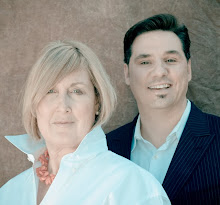The classic shot of the Firehouse with vintage engine.
The main room on the ground floor upon walking in the front door. This shot taken from the Sotheby's web site.
Back on November the 12th I attended a program by the ICA (Institute of Classical Architecture) at the former home of the late great decorator John Dickinson. Mr. Dickinson has always been an icon of mine, and this was an opportunity I wouldn’t pass up. The location was the now famous “Firehouse” (a former firehouse from 1893 transformed into a residence) that was owned by the now legendary San Francisco designer. Mr. Dickinson is probably best known for his lively furniture that featured animal legs which are now highly prized, as well as his astute use of materials.
John Dickinson's most famous furniture piece, the three legged plaster stool. This image taken from the Antiques & Art Exchange web site.
An animal skin rug in an upstairs bedroom next to a three legged table.
The Firehouse is currently owned by Mr. John Traina who is somewhat of a local luminary, and the property is currently on the market through Sotheby’s. Mr. Traina’s extensive collections of art, curiosities and over–the-top furniture seem to pay homage to the roots of the Firehouse’s design-rich past.
The Firehouse is currently owned by Mr. John Traina who is somewhat of a local luminary, and the property is currently on the market through Sotheby’s. Mr. Traina’s extensive collections of art, curiosities and over–the-top furniture seem to pay homage to the roots of the Firehouse’s design-rich past.

The walls containing the spiral staircase had art hung so that you were always looking at something on your way up or down.
The grand Mahogany bookcase in the main room of the upper floor that used to be the fireman's dormitory.
The main room of the upper floor with the wonderful chromed fireplace from when John Dickinson was in residence.
After a wonderful social hour where attendees were encouraged to explore around the public spaces, there was a brief and intimate talk given by Diane Dorrans Saeks of the Style Saloniste. Diane was a close friend of Mr. Dickinson and has written intimately about him, some of which can be read here. Diane spoke of Mr. Dickinson’s ethos of design and how his style related to that of his local contemporaries, namely the late great Michael Taylor.
The crowd at the event prior to the talk by Diane Dorrans Saeks.
What is most interesting is that Ms. Saeks also went on to talk about how she has attempted to have a book published on the subject of Mr. Dickinson. The subject of the book is how she originally came to know him and would visit him on Sundays as they shared their passion for design. One of the first responses from a publisher Diane received was “We wouldn’t do a book on a dead decorator”. This was several years ago, and I think the attitude has clearly changed in this regard. I for one revel in the idea of reading more intimately about a design great, but the future will tell if it was meant to be.
An office off the main room which housed a wonderful reproduction William Switzer desk, and was painted the most beautiful red.
It was a treat to get to see this legendary space first hand and connect to one of the origins of San Francisco’s interior design heritage.
You can visit the Sotheby’s web site specific to the property here.
David Hansen





























































